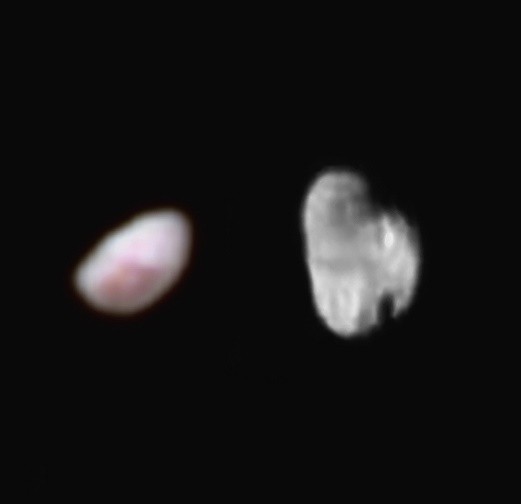New images from NASA's New Horizons spacecraft reveals unprecedented views of the Pluto system that focuses on the dwarf planet's intriguing, tiny moons, Nix and Hydra. The probe just conducted the first ever flyby of Pluto last July 14 after travelling for almost 10 years across 3 billion miles in deep space.
This new photo reveals these mysterious moons with more detail than ever before which are two of Pluto's five natural satellites. Nix now resembles a jellybean which reveals a bizarre reddish patch where Hydra on the other hand, appears to be a large, gray mitten.
Researchers believe that the reddish region on Nix appears to show some sort of a bull's eye pattern that could be a massive impact crater.
According to New Horizons mission scientist, Carly Howett from the Southwest Research Institute in Colorado, the team already received and downloaded data from the latest transmission regarding Nix which can reveal more details about why the region is darker than its surroundings.
This particular photo of Nix was captured by new Horizons from a distance of 102,000 miles where the moon shows a measurement of 26 miles long and 22 miles in diameter, according to researchers.
On the other hand, Hydra is larger than Nix, which measures 34 miles long and 25 miles wide, based on the new images, which New Horizons has captured some 143,000 miles away. Hydra also reveals two visible craters that could suggest that the upper and lower hemispheres of the moon is made from two different materials which is apparent on its surface.
According to mission science collaborator, Ted Stryk from the Roane State Community College, Tennessee, last week, Hydra just looks like some faint light in the distance as these new images have finally shown the actual shape and even surprising features on the surface for the very first time.
The Pluto system's largest moon is Charon, measuring 750 miles in diameter where it shows a mysterious northern polar cap. The other two moons, Kerberos and Styx are even smaller than Nix and Hydra, where New Horizons will transmit images of them for the first time by October.



























